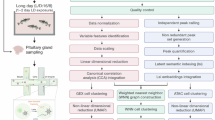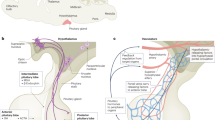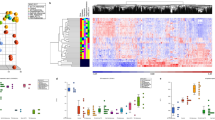Abstract
THERE is a marked similarity in the morphological appearance of mast cells and the parenchymatous glandular cells of the infundibular process (neural lobe) of the pituitary gland described by Gersh1. It has been suggested by Rennels and Drager2 that the parenchymatous glandular cells may play a part in the final release of the hormones of the posterior pituitary into the general circulation. Although Gray3 described mast cells in the pituitary gland of man, ox and cat, the presence of these cells seems to have been largely ignored by more recent workers.
This is a preview of subscription content, access via your institution
Access options
Subscribe to this journal
Receive 51 print issues and online access
$199.00 per year
only $3.90 per issue
Buy this article
- Purchase on SpringerLink
- Instant access to full article PDF
Prices may be subject to local taxes which are calculated during checkout
Similar content being viewed by others
References
Gersh, I., Amer. J. Anat., 64, 407 (1939).
Rennels, E. G., and Drager, G. A., Anat. Rec., 122, 193 (1955).
Gray, J. H., J. Anat., 69, 153 (1935).
Author information
Authors and Affiliations
Rights and permissions
About this article
Cite this article
GARVIE, W. Mast Cells of the Pituitary Gland. Nature 205, 1334 (1965). https://doi.org/10.1038/2051334a0
Issue date:
DOI: https://doi.org/10.1038/2051334a0



